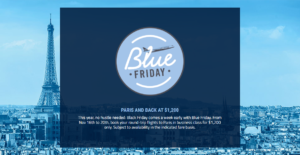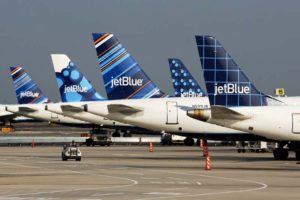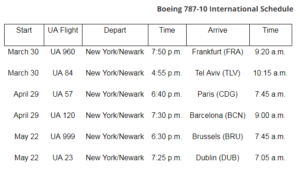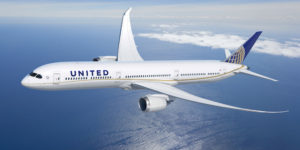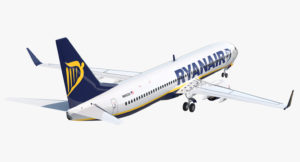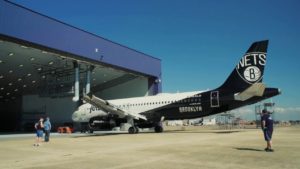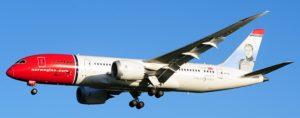NEW YORK–(BUSINESS WIRE)– JetBlue Airways Corporation (NASDAQ:JBLU) today reported its results for the third quarter 2018:
- Reported diluted earnings per share of $0.16, inclusive of $112 million in one-time costs related to the E190 fleet transition and the recently-signed pilot contract. Excluding these costs, adjusted diluted earnings per share of $0.43(1). This compares to JetBlue’s third quarter 2017 diluted earnings per share of $0.55.
- GAAP pre-tax income of $68 million. Excluding the one-time costs, adjusted pre-tax income of $180 million(1), a decrease of 39.5% from the third quarter of 2017.
- Pre-tax margin of 3.4%, inclusive of the one-time costs. Excluding these one-time costs, adjusted pre-tax margin of 9.0%(1), a 7.4 point decrease year over year.
Highlights from the Third Quarter 2018
- Third quarter 2018 revenue per available seat mile (RASM) increased 1.7%, year over year, including 0.4 points of negative impact from severe weather during September.
- Operating expenses per available seat mile, excluding fuel (CASM ex-fuel) growth of 3.2%, at the lower end of the updated guidance range of 3.0% to 5.0%. CASM ex-fuel for the third quarter includes a 2.0 point headwind related to recurrent costs of the pilot contract, effective as of August 1st.
Key Guidance for the Fourth Quarter and Full Year 2018:
- Capacity is expected to increase between 7.5% and 9.5% year over year in the fourth quarter 2018. The fourth quarter guidance includes a previously-announced 2.0 point ASM reduction to mitigate the impact of higher fuel prices. For the full year 2018, JetBlue expects capacity to increase between 6.5% and 7.0%.
- RASM growth is expected to range between 1.0% and 4.0% for the fourth quarter 2018 compared to the same period in 2017.
- CASM ex-fuel is expected to decrease between (3.5)% and (1.5)% for the fourth quarter of 2018. CASM ex-fuel for the fourth quarter includes a 3.0 point headwind related to the pilot contract. For the full year 2018, JetBlue expects year over year CASM ex-fuel to be between 0.75% and 1.75%. The headwind from the pilot contract to CASM ex-fuel for the full year 2018 is expected to be equal to 1.3 points.
For further details see the latest Investor Update and the Third Quarter 2018 Earnings Presentation available via the internet at http://investor.jetblue.com.
JetBlue will conduct a conference call to discuss its quarterly earnings today, October 23, at 10:00 a.m. Eastern Time. A live broadcast of the conference call will also be available via the internet at http://investor.jetblue.com.
(1) Note A provides a reconciliation of non-GAAP financial measures used in this release and provides the reasons management uses those measures.
Executing our Plan to Reach our EPS Commitments
“I’d like to thank our 22,000 Crewmembers, for all their hard work delivering the JetBlue experience to our Customers. Our financial performance was impacted by fuel prices that increased approximately 37% year over year. We are on track to hit our 2018 CASM ex-fuel guidance, despite pulling capacity in both the third and fourth quarters to adjust to higher fuel prices.
In the short term, we are focused on improving our earnings, particularly in the areas we can control, and have a plan to improve margins in 2019, and again in 2020. We are taking actions to recapture higher fuel costs through price – both with fare increases over recent months and through higher ancillary revenue initiatives. At our Investor Day in early October, we showed how our five building blocks will help us improve our margins and achieve our earnings target between $2.50 and $3.00 per share by 2020,” said Robin Hayes, JetBlue’s Chief Executive Officer.
“Since 2014 we have a track record of executing our plans – and we have a path to continue improving our relative margins, starting in 2019. We have the culture, the brand and the geography we need to be successful,” said Joanna Geraghty, JetBlue’s President and Chief Operating Officer.
Revenue Performance and Outlook
Third quarter RASM increased 1.7%. Excluding the 0.4 point impact from severe weather during September, RASM was above the mid-point of our updated guidance of 1.0% to 3.0%. During the quarter we saw close-in demand trends improve across the network,” said Marty St. George, JetBlue’s EVP Commercial and Planning.
“We continued to grow our capacity on the lower end of our mid to high single digit range. For the fourth quarter, we expect capacity growth between 7.5 and 9.5 percent. Given the 2.9 points of lost capacity from hurricanes in the fourth quarter of 2017, our schedule-to-schedule capacity growth is approximately 6 percent for the fourth quarter of 2018. We expect to see some revenue benefits from the network changes and the ancillary revenue changes launched during the third quarter.”
Cost Performance, Outlook and Balance Sheet
Third quarter CASM ex-fuel was 3.2%, at the low end of the updated guidance of 3.0% to 5.0%, driven by improvements in unit maintenance costs. “We are on track to hit our 2018 plan despite the added pressure from reducing our capacity in the second half. We will continue to find opportunities to mitigate these pressures, in addition to the savings from the Structural Cost Program that build each quarter,” said Steve Priest, JetBlue’s EVP Chief Financial Officer.
“We continue to see sequential improvement in our underlying non fuel costs, and reached an inflection point during the second half this year, as we execute our Structural Cost Program. We are confident we can deliver on our 2019 commitments made at Investor Day, and are on track to achieve our 0-1 CASM CAGR through 2020.”
Capital Allocation and Liquidity
JetBlue ended the quarter with approximately $937 million in unrestricted cash and short term investments, or about 12.6% of trailing twelve month revenue. In addition, JetBlue maintains approximately $625 million in undrawn lines of credit.
In its commitment to maintaining a balanced approach to capital allocation, JetBlue executed an additional $125 million in share repurchases during the quarter.
During the third quarter, JetBlue repaid $54 million in regularly scheduled debt and capital lease obligations, and raised $261 million in net proceeds in secured aircraft debt. JetBlue anticipates paying approximately $45 million in regularly scheduled debt and capital lease obligations in the fourth quarter and approximately $223 million for the full year 2018. JetBlue anticipates maintaining a 30-40% adjusted debt to cap range and liquidity between 10% and 12%.
Fuel Expense and Hedging
The realized fuel price in the quarter was $2.32 per gallon, a 36.6% increase versus third quarter 2017 realized fuel price of $1.69.
JetBlue entered into forward fuel derivative contracts to hedge approximately 7.7% of its fuel consumption during the fourth quarter of 2018. Based on the fuel curve as of October 15th, JetBlue expects an average price per gallon of fuel of $2.48 in the fourth quarter of 2018.
About JetBlue
JetBlue is New York’s Hometown Airline®, and a leading carrier in Boston, Fort Lauderdale – Hollywood, Los Angeles (Long Beach), Orlando, and San Juan. JetBlue carries more than 40 million customers a year to 103 cities in the U.S., Caribbean, and Latin America with an average of 1,000 daily flights. For more information please visit www.jetblue.com.
Notes
(1) Consolidated operating cost per available seat mile, excluding fuel and related taxes, and operating expenses related to other non-airline businesses (CASM Ex-Fuel) is a non-GAAP financial measure that we use to measure our core performance. Note A provides a reconciliation of non-GAAP financial measures used in this release and provides the reasons management uses those measures.

Image from http://blog.jetblue.com

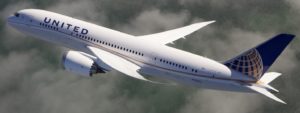
 For further information: United Airlines Worldwide Media Relations, 872-825-8640, media.relations@united.com
For further information: United Airlines Worldwide Media Relations, 872-825-8640, media.relations@united.com